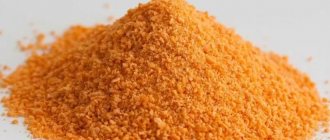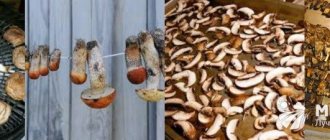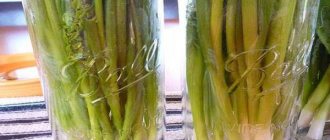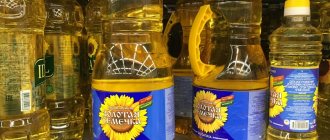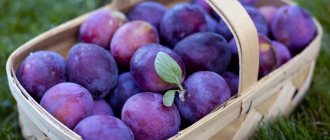Honey is an incredibly healthy natural product that we get from bees. The hives have ideal conditions for it: temperature, humidity, tightness. The waxed walls prevent bacteria and excess odors from leaking in, and it is always warm inside: from +5 to +20 C. This way it can be stored for decades. In this article we will look at how long to store honey, what are the optimal storage conditions in an apartment: cold or warm, how to extend the shelf life and preserve its beneficial properties.
Let's look into it in detail!
Shelf life of honey according to GOST
According to GOST, the shelf life of bee products in tightly closed containers is 1 year from the date of examination, and in hermetically sealed containers - 2 years from the date of packaging.
What's the difference? In tightly sealed containers, bee products are stored in the manufacturer’s warehouses until a batch of 3,000 to 100,000 kg is accumulated and subsequent transportation. Responsibility for preserving the goods falls on the manufacturer and is verified through examination until the moment of sale.
Shelf life of honey at room temperature
Ideally - from 8 months to 1 year, in a hermetically sealed container - indefinitely.
Allows you to store honey at room temperature, not higher than 20 C, in a closet or on the balcony. The bee product itself is a very good preservative. The composition contains enzymes that prevent bacteria and mold from multiplying. Heating leads to accelerated crystallization and even souring: the delicacy bubbles, foam forms on the surface and a sour taste appears. This may cause separation or darkening.
If you store sweets from the apiary correctly, only sugaring occurs: the color and consistency change, but not the taste.
Subtleties and features of the storage process
You can ensure that the delicacy retains all its beneficial properties for a long time if you know all the nuances: where to store it, under what conditions.
Tara
The ideal option is a clay or glass container with a tight-fitting lid. Honeycombs have the ability to absorb odors around them, so a cover is necessary.
Important! You cannot store the product in a metal container without enamel coating: the surface under the influence of the sweet product oxidizes and releases toxic substances.
As for glassware, it is desirable that the glass is dark in color and does not transmit light. Can be stored in enamel containers. Our ancestors kept the product in wooden containers, but here we need to take into account that coniferous wood is not suitable.
Today's popular food-grade plastic containers are also suitable for this purpose, but no matter how high-quality the material is, honey will suffocate if stored in it for a long time.
Place
It is most convenient to store honeycombs in an apartment in the refrigerator, on food shelves, where the temperature is not too low. In a private home, a cellar or basement is ideal, provided the room is dry and has a ventilation system.
Microclimate
The ideal conditions for storing nectar are the following factors:
- temperature - +3...+10°С;
- humidity - 50-55%;
- the air is free of foreign pungent odors, clean and fresh;
- lighting - no.
What determines the shelf life of honey?
Temperature
The main thing when saving is to maintain a temperature regime in the range from +1 to +20 C, according to the DSTU standard, a maximum of +25 C. Different types of honey are preserved under different conditions:
| Honey variety | Optimal temperature | Storage | Peculiarities |
| Linden/Floral | from -5 to +20 | Refrigerator / Kitchen cabinet / Freezer | Does not lose properties and taste when frozen. Doesn't crystallize for a long time. After settling, it can be stored indoors up to +30 C. |
| Rapeseed | from 0 to +5 | Refrigerator cabinet | Sugars quickly. Keep it cold only. |
| In the honeycomb | -5 to + 5 | Refrigerator/freezer/cellar | Doesn't like temperature changes. |
| With royal jelly | from 0 to +5 | Refrigerator/cellar | The addition of royal jelly reduces the shelf life to 6 months. |
| With propolis | from 0 to +20 | Refrigerator/cellar/kitchen cabinet | Not afraid of temperature changes. Retains elasticity for a long time. |
| With pollen | from 0 to +20 | Refrigerator/cellar/kitchen cabinet | If the temperature is maintained, it can be stored for up to 5 years. |
| With beebread | from 0 to +20 | Kitchen cabinet/ Refrigerator | Bee bread mixed with honey can be stored for about 1 year and is undemanding to conditions. |
It should be remembered why nectar from the apiary should not be heated too much: this leads to the loss of vitamins and microelements. The product darkens and a bitter taste appears.
Humidity
High humidity in the room will inevitably lead to souring of the miracle delicacy. Less is better. Ideally, the humidity level during storage will be 40–75%. The worse the packaging, and the lower the temperature, the lower the ambient humidity should be.
Capacity
First of all, the container must be lightproof and hermetically sealed. Ideally stored in earthenware or dark glass jars, it is allowed in wooden tubs and barrels. Beekeeping elements absorb the smell of wood, so you should avoid containers made of coniferous materials. For short-term storage or transportation, you can use a plastic container or bottle. But such containers are not intended for long-term preservation, since they transmit harmful sun rays, over time react with the contents and begin to release toxic substances. And it is no longer safe to eat it.
Also, you should not leave sweets in a metal container for a long time, as the oxidation process occurs, and life-threatening oxides get into your favorite treat.
Tightness
As mentioned above, any container with beekeeping elements must be hermetically sealed. As a result of improper storage, honey separates and begins to ferment. To avoid this, carefully monitor the tightness of the container. It’s best to purchase a set of special jars with hermetically sealed lids.
Odors and dust
Honey easily absorbs flour and cement dust, the smell of smoke and any chemicals. You should keep sweets away from strong-smelling foods. Unless, of course, you want to give your favorite sweet the specific smell of pickles or sauerkraut, for example.
Lighting
Exposure to sunlight in this case is destructive: it leads to the loss of all beneficial and healing properties. If you leave the jar on the windowsill, then within a day your healthy sweetness will turn into liquid sugar.
How to store honey at home?
The decision on how to properly store honey is made at home, taking into account its original quality. The following factors are important:
- Maturity – the aged product is enriched with enzymes and contains a small amount of moisture, which allows it to be stable for a long time. If pumped out ahead of time, it consists of 20% water, is prone to souring and is unsuitable for long-term storage.
- Origin - flower honey is least susceptible to spoilage, rich in biologically active compounds coming from nectar and pollen, and preventing the proliferation of microorganisms. The honeydew variety, the lowest of all, does not contain such substances, easily ferments, and therefore has a short shelf life.
- Feeding bees with sugar results in honey that is poor in phytoncides and natural antibiotics and quickly spoils.
Otherwise, honey storage technology involves controlling temperature, air humidity and protecting it from direct sunlight.
Shelf life of honeycomb
Thanks to the natural shell, the shelf life of nectar from the apiary in the cells is greater than after pumping. Slowing down the crystallization process and maintaining all medicinal properties. It has a protective effect thanks to wax and propolis, which are part of comb honey.
On average, their shelf life is 2-3 years if the conditions are met.
The procedure for storing frames with honeycombs is similar to the usual one, but there is a small nuance: wax frames attract moths, so it is especially important to keep them hermetically sealed. The lower the temperature, the longer they last, you can even freeze them. But it is worth remembering that honeycombs do not tolerate repeated freezing and defrosting. At room temperature, the shelf life of the frames is reduced to six months.
Solving cell storage problems
You can divide all cells into several groups:
- Those that do not contain food are dry.
- Those with a sufficient amount of beebread and honey.
Also, white honeycombs are distinguished separately, they are young and dark, which are outdated. The latter with honey are very difficult to preserve; moths love to infest them. The beekeeper should periodically dry them and throw them away.
There is rarely a problem with dry white honeycomb. It needs to be stored hanging, it can be placed under a canopy. Do not forget that they need to be covered with a special net that will protect against birds and other parasites. Frames will only be stored if normal air ventilation is ensured. When the frames are expanded, the shelf life increases.
Acacia honey
Half-frames with drying materials should be stored in a special spacious box in winter. The honeycombs that the beekeeper did not have time to throw away must be thoroughly dried in the fall and stored in a honeycomb storage facility; they can be used as spare hives, free and empty boxes, they are placed in a shady place, there should be no cracks in them.
Bees do not have access to storage facilities, but you should always be aware of rodents that can damage products.
The honeycombs need to be sorted, white dry material, spare frames and those that have not been written off stand out. Autumn and winter are the seasons when wax moths are inactive. In the spring you need to be careful, double-check everything carefully. When the old honeycombs are black, throw them away and reheat them. Others need to be moved apart to protect them from parasites.
Additionally, you can use the following methods - place a container in the hive, add vinegar to it; wax moths are afraid of the smell. Keep in mind that this method negatively affects the condition of the frame wire; it begins to rust quickly and may break. You can repel moths with the scent of lavender, wormwood or special preparations.
What does crystallization (sugarification) of honey mean?
Sugaring nectar from an apiary does not affect its properties in any way, and also does not indicate old age. This is a natural process, and the period of crystallization depends on the composition of the bee treat: the percentage of glucose and fructose. The more fructose, the slower it thickens.
- Acacia - about 2 years.
- Linden - about 3 months.
- Chestnut - about 6-12 months.
- May - from 3 to 6 months (the earliest, collected in the spring from flowering trees and the first flowers).
- Buckwheat - from 1 to 3 months (best for preparing honey dough).
- Honeydew - if handled properly, it will be liquid for a year and a half (it is produced in bee production, it contains honeydew (secretions of aphids and some other insects) and honeydew (according to Wikipedia).
Brief information about storing honey
We looked at all the factors that influence how you save this miracle treat. Suitability is not limited by GOST: there are sources that say that it can last for decades and not lose its beneficial properties. All you need is to follow simple storage rules: in a dark, dry, cool place, in sealed packaging, away from strong-smelling substances and food. The secrets of saving nectar from the apiary and beekeeping tools are written in the works of A.A. Belozerov. Below is a photo of vessels with a miracle delicacy found in the tomb of the pharaoh, which did not lose their original properties.
You can find many homemade options, for example, dandelion honey. Is there any benefit from such a miracle treat? Definitely yes. This syrup has a lot of vitamins and is very useful in winter. But we must understand that this is not a bee product. There are several other interesting products: Viennese coffee, soufflé, radish with honey, sea cucumber. Also, elements of beekeeping can be found in medicines: ointments and balms.
It is no secret that in addition to proper storage organization, it is important to buy the “right” bee product. There are several ways to check: from folk to expert and exotic. Professionals check it in an ultraviolet camera. Depending on the quality, the color changes in UV radiation.
Each type of miracle treat has its own unique structure, taste and aroma. It’s so nice to put a treat in a beautiful bowl and drink tea with the whole family! And most importantly, it improves your health! You will pass any medical examination: routine, driving, etc., if you eat a healthy beekeeping product every day.
Storage period
Before you figure out how to properly store honey in an apartment, you should define the acceptable time limits. There is an opinion among people that reserves should be used up within a year, otherwise there will be no benefit left from this product. Moreover, many argue that after 12 months honey ceases to be a medicine and can be harmful to health.
In fact, this is nothing more than a myth. Of course, after a year, the color, texture and aroma will change. However, if you know how to properly store honey in an apartment, even after 2 or more years it will retain its properties. This can be confirmed by the fact that during one of the archaeological excavations an ancient vessel with a viscous golden liquid was found. After appropriate tests, it turned out that this was honey, which after several centuries was still suitable for consumption.
Thus, the most important thing is to know how to store honey correctly at home. The shelf life of the product will be almost unlimited if you strictly follow the rules.

